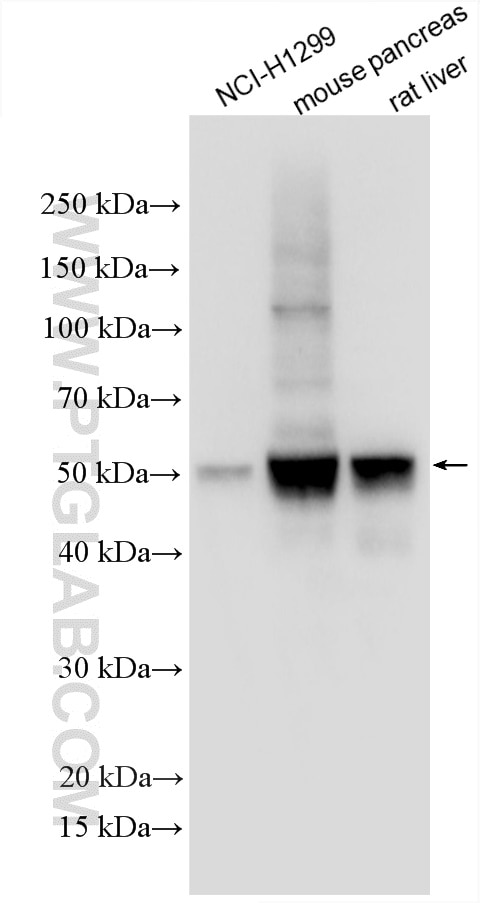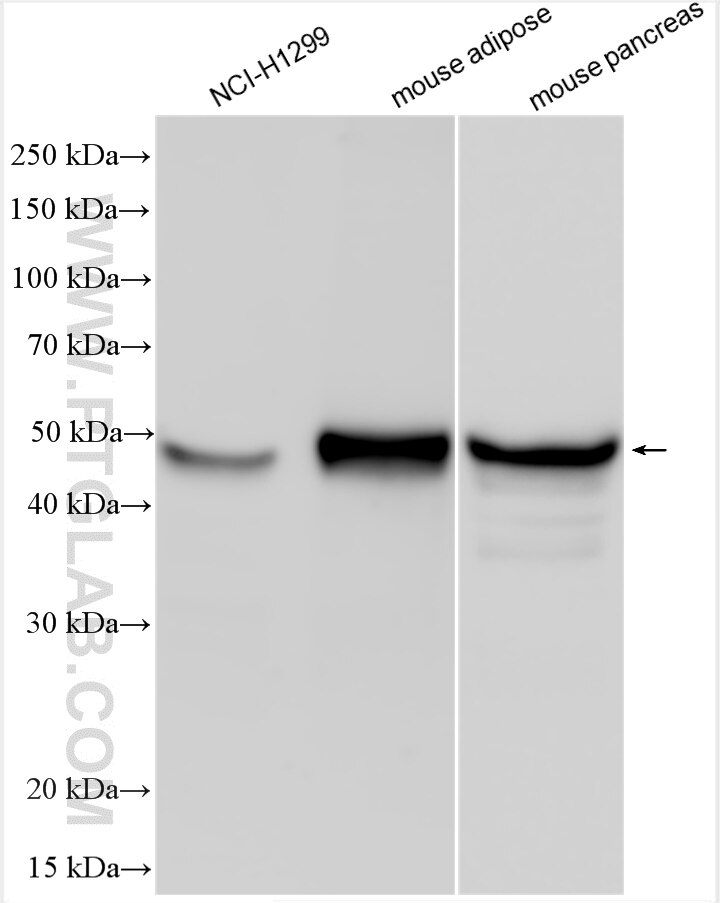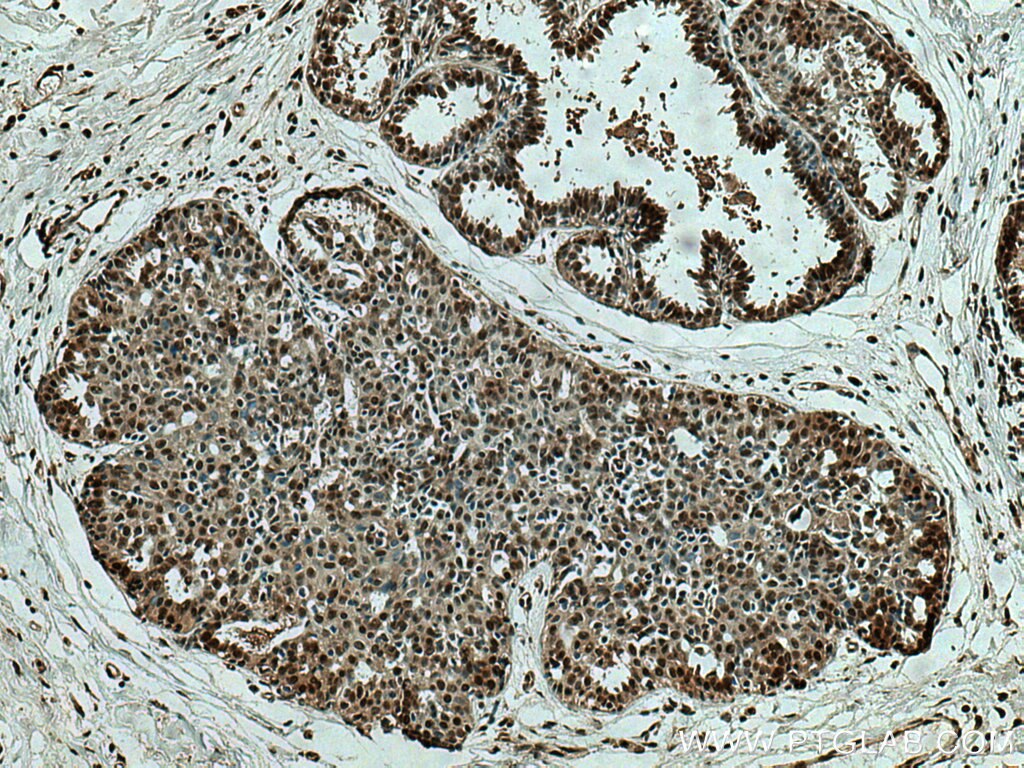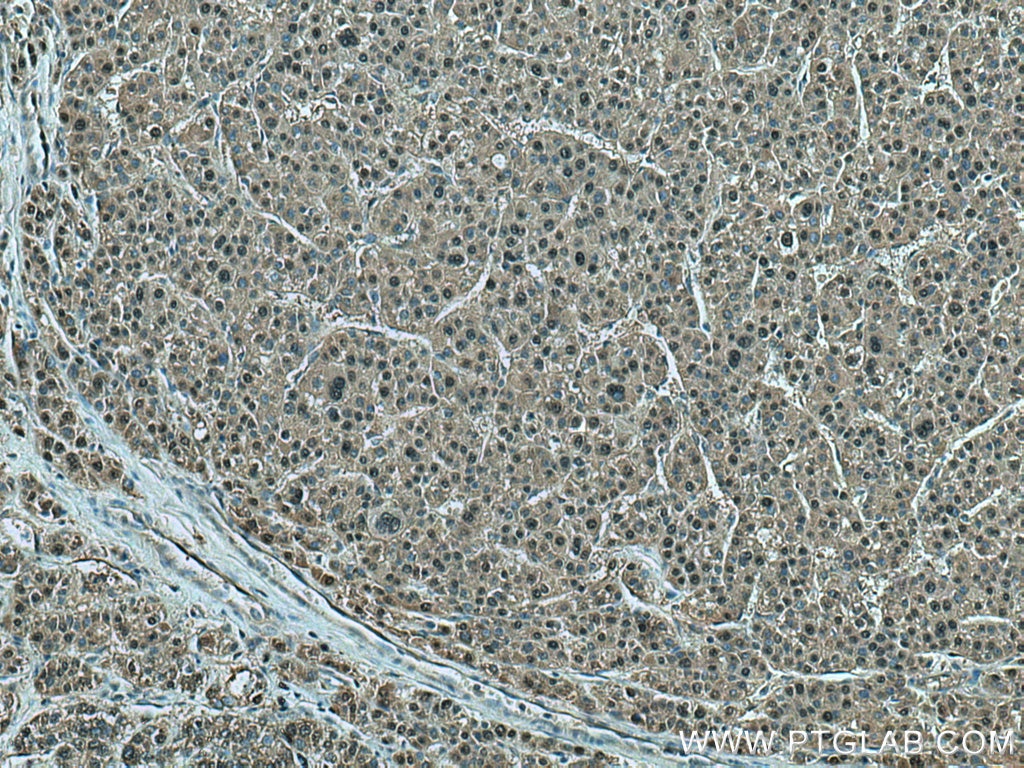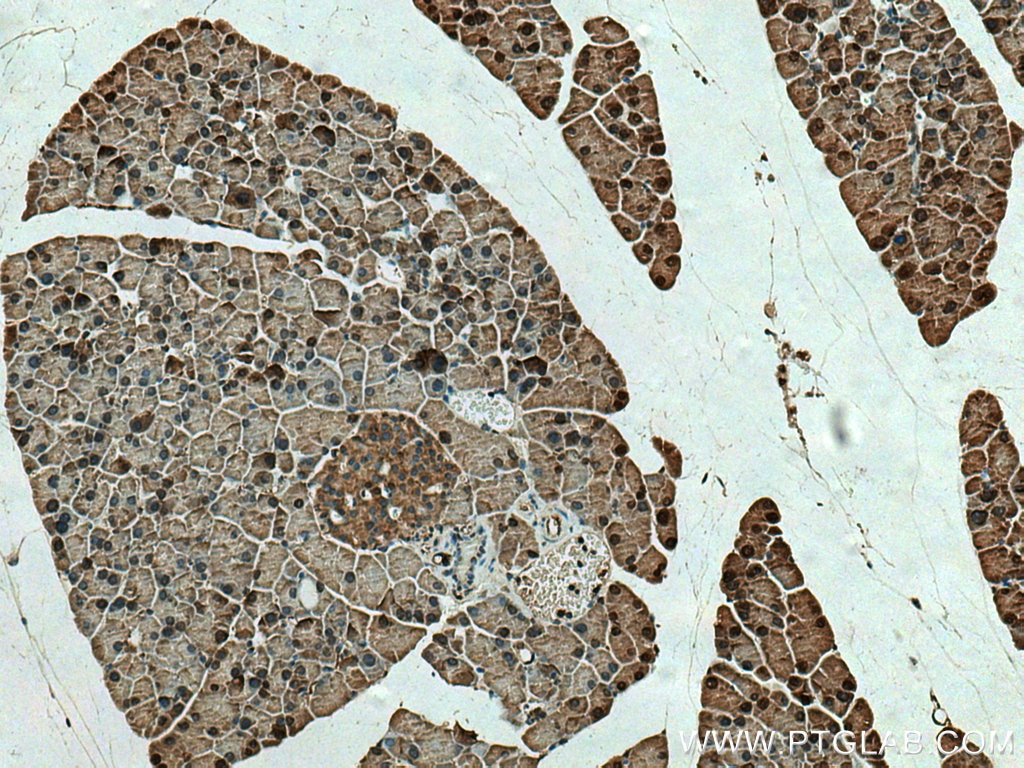SEPHS2 Polyklonaler Antikörper
SEPHS2 Polyklonal Antikörper für WB, IHC, ELISA
Wirt / Isotyp
Kaninchen / IgG
Getestete Reaktivität
human, Maus, Ratte
Anwendung
WB, IHC, ELISA
Konjugation
Unkonjugiert
Kat-Nr. : 14109-1-AP
Synonyme
Geprüfte Anwendungen
| Erfolgreiche Detektion in WB | NCI-H1299-Zellen, Maus-Fettgewebe, Maus-Pankreasgewebe, Rattenlebergewebe |
| Erfolgreiche Detektion in IHC | humanes Mammakarzinomgewebe, humanes Leberkarzinomgewebe, Maus-Pankreasgewebe Hinweis: Antigendemaskierung mit TE-Puffer pH 9,0 empfohlen. (*) Wahlweise kann die Antigendemaskierung auch mit Citratpuffer pH 6,0 erfolgen. |
Empfohlene Verdünnung
| Anwendung | Verdünnung |
|---|---|
| Western Blot (WB) | WB : 1:1000-1:4000 |
| Immunhistochemie (IHC) | IHC : 1:50-1:500 |
| It is recommended that this reagent should be titrated in each testing system to obtain optimal results. | |
| Sample-dependent, check data in validation data gallery | |
Veröffentlichte Anwendungen
| WB | See 5 publications below |
| IHC | See 1 publications below |
Produktinformation
14109-1-AP bindet in WB, IHC, ELISA SEPHS2 und zeigt Reaktivität mit human, Maus, Ratten
| Getestete Reaktivität | human, Maus, Ratte |
| In Publikationen genannte Reaktivität | human, Maus |
| Wirt / Isotyp | Kaninchen / IgG |
| Klonalität | Polyklonal |
| Typ | Antikörper |
| Immunogen | SEPHS2 fusion protein Ag5255 |
| Vollständiger Name | selenophosphate synthetase 2 |
| Berechnetes Molekulargewicht | 47 kDa |
| Beobachtetes Molekulargewicht | 47-50 kDa |
| GenBank-Zugangsnummer | BC016643 |
| Gene symbol | SEPHS2 |
| Gene ID (NCBI) | 22928 |
| Konjugation | Unkonjugiert |
| Form | Liquid |
| Reinigungsmethode | Antigen-Affinitätsreinigung |
| Lagerungspuffer | PBS with 0.02% sodium azide and 50% glycerol |
| Lagerungsbedingungen | Bei -20°C lagern. Nach dem Versand ein Jahr lang stabil Aliquotieren ist bei -20oC Lagerung nicht notwendig. 20ul Größen enthalten 0,1% BSA. |
Hintergrundinformationen
SEPHS2 (Selenophosphate synthetase 2), a selenophosphate synthetase, catalyzes the conversion of selenite and adenosine triphosphate (ATP) into selenophosphate. SEPHS2 is the rate-limiting enzyme that converts selenite to selenocysteine, a key substance in the synthesis of many selenium proteins such as glutathione peroxidase, thioredoxin reductase, and formate dehydrogenase (PMID: 40750759, 31695102).
Protokolle
| PRODUKTSPEZIFISCHE PROTOKOLLE | |
|---|---|
| WB protocol for SEPHS2 antibody 14109-1-AP | Protokoll herunterladen |
| IHC protocol for SEPHS2 antibody 14109-1-AP | Protokoll herunterladenl |
| STANDARD-PROTOKOLLE | |
|---|---|
| Klicken Sie hier, um unsere Standardprotokolle anzuzeigen |
Publikationen
| Species | Application | Title |
|---|---|---|
Mol Cell PRDX6 dictates ferroptosis sensitivity by directing cellular selenium utilization | ||
Biomaterials H2Se-evolving bio-heterojunctions promote cutaneous regeneration in infected wounds by inhibiting excessive cellular senescence | ||
EMBO Mol Med Breast cancer secretes anti-ferroptotic MUFAs and depends on selenoprotein synthesis for metastasis | ||
Front Med (Lausanne) A glycometabolic gene signature associating with immune infiltration and chemosensitivity and predicting the prognosis of patients with osteosarcoma | ||
Nat Struct Mol Biol PRDX6 augments selenium utilization to limit iron toxicity and ferroptosis | ||
Cell Death Dis METTL5 regulates SEPHS2-mediated selenoprotein synthesis to promote multiple myeloma survival and progression |
